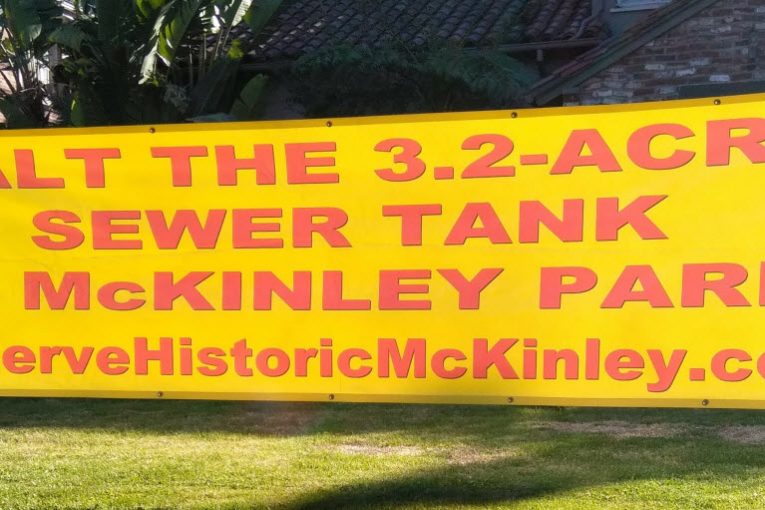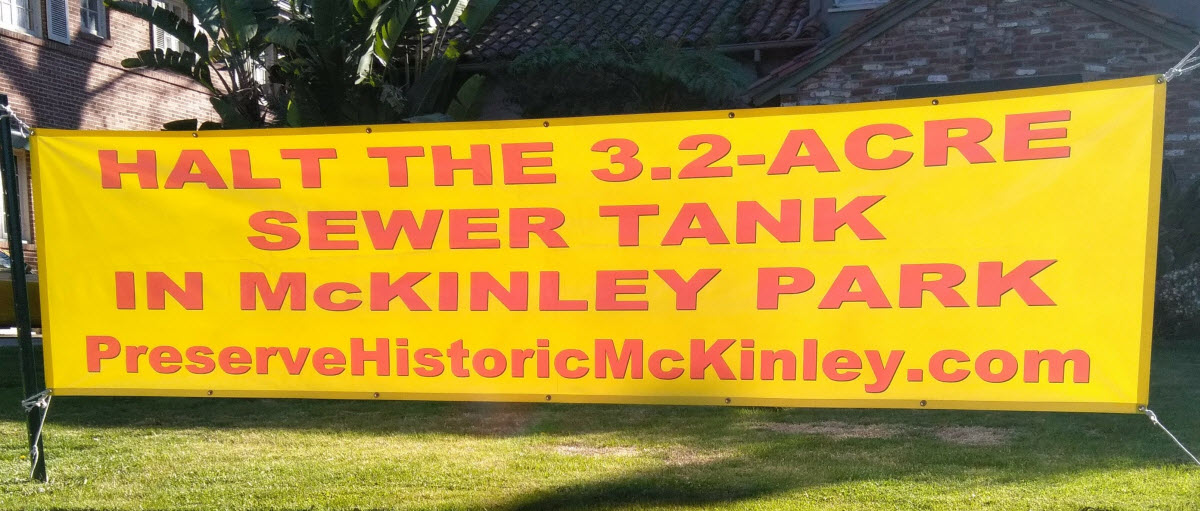

By Crescenzo Vellucci
Vanguard Sacramento Bureau
SACRAMENTO – It’s difficult to hear that a beautiful, 33-acre, nearly 150-year old Sacramento park with an iconic baseball field, gardens and hundreds of trees you grew up with has no “historical significance.”
But that and the assertion that the many large McKinley Park trees have no “biologically sensitive value” are what the city of Sacramento maintained late last week in a hearing in Sacramento County Superior Court, pitting the city and city council against a determined citizens group.
The citizens group is attempting to get a Superior Court judge to halt ongoing construction of a $36 million, football field-sized underground sewage tank under iconic McKinley Park which was constructed in 1872.
In February, the group lost its bid to get a preliminary injunction in the civil suit – a high bar to reach, maybe especially true for ordinary residents up against a municipality.
Judge Richard K. Sueyoshi, said, in essence, earlier this year to Citizens for a Safe and Sewage-Free McKinley Park (CSSFMP), that the project can move on as scheduled – excavation then began in July, and all construction is expected to be completed by 2021.
The defendants, in this case the City of Sacramento and the members of the Sacramento City Council, won that first round, although the lawsuit in main continues.
The injunction was sought because the citizens group maintains that McKinley Park will be harmed from the destruction of around 60 trees, to the demolition of its iconic baseball backstop and diamond. Not to mention the noise and air pollution that would impact the area from construction.
The goal of the project, said the city, is to alleviate “stress” on the combined sewer and storm water system and provide offline storage during severe storm “events” and would include flow control valves, odor control, and other protections to reduce flooding in for 200,000 residents in downtown Sacramento, River Park, Land Park, Curtis Park, Oak Park, and East Sacramento.
However, in last week’s hearing asking for the court to step in and stop the construction, the citizens group lawyers didn’t mince words.
“The City’s opposition resorts to dismissive and misleading characterizations of Petitioner’s arguments, and reflects a desperate, final attempt to defend—by obfuscation and misdirection—the fatally flawed Sewage Vault Project,” argued Stephen R. Cook, an attorney with BrownRudnick.
Judge Sueyoshi specifically asked both the city to respond to the citizens group argument that the EIR (environment impact report) analysis of the impacts on trees violates CEQA law, and if the city should have recirculated its EIR once the park was named on the National Registry of historical places . He also wanted to hear the city respond to the argument that construction doesn’t address “horseshoe pits and light standards.”
Regarding the trees, Cook’s pleading noted that the city of Sacramento really didn’t analyze the effect of the large trees in McKinley Park. The plaintiffs have contended 60 or more trees could be destroyed – the city suggested only about six may be impacted.
The city has a “legal obligation to analyze and to disclose the Project’s impacts on the mature tree canopy in historic McKinley Park, particularly because the (city) Tree Ordinance expressly permits damage to be done to trees,” said Cook in the pleading in response to the city’s claim that it was following the city’s tree ordinance, which Cook suggested isn’t necessarily tree-friendly.
Likewise, Cook argued that, while city commissions approved of the National Register designation of McKinley Park, the city council ignored that and voted to continue with massive construction in the park.
“The City’s defense of its historic resources analysis is similarly flawed,” said Cook, noting that, although McKinley was nominated to the National Register, the city more or less ignored it.
The city’s defenses of its air quality and traffic analyses are “similarly egregious,” said Cook, adding that “similar defects plague the City’s defense of its noise and vibration, geology and soils, hazardous materials, and alternatives analyses.”
The city insisted at last week’s hearing that they “could” easily put McKinley Park back together, including the baseball diamond. But, in fact, as Cook pointed out in court, the city will not do that.
Even though baseball has been played at McKinley Park for nearly a century at George “Butter” Cole field, the city admitted it plans to install only a replacement “multi-purpose” field. That would “diminish” the historical significance of the park, said the proponents of the lawsuit.
And residents who are part of the lawsuit said the EIR failed to “study impacts on hazards and hazardous materials, cause “millions of gallons of sewage and sewage-contaminated stormwater to be imported from the region’s combined sewer system into McKinley Park” and that the EIR fails to evaluate the short-term and long-term risks of these hazardous materials.
“Specifically, the EIR fails to consider the impacts that may be caused by storing human waste/E. coli, petroleum distillates, heavy metals, and asbestos in the Sewage Vault, including the possibility for methane build-up,” charged the citizens group in its filing.
It also noted climate change could produce larger and wetter storms, allowing for more use of the facility and putting the community at risk.
They believe that during severe storms, flooding would allow untreated wastewater to remain in low-lying areas in the McKinley Park area.
Judge Sueyoshi, after a little more than an hour of arguments, took the matter under advisement and will rule later.
